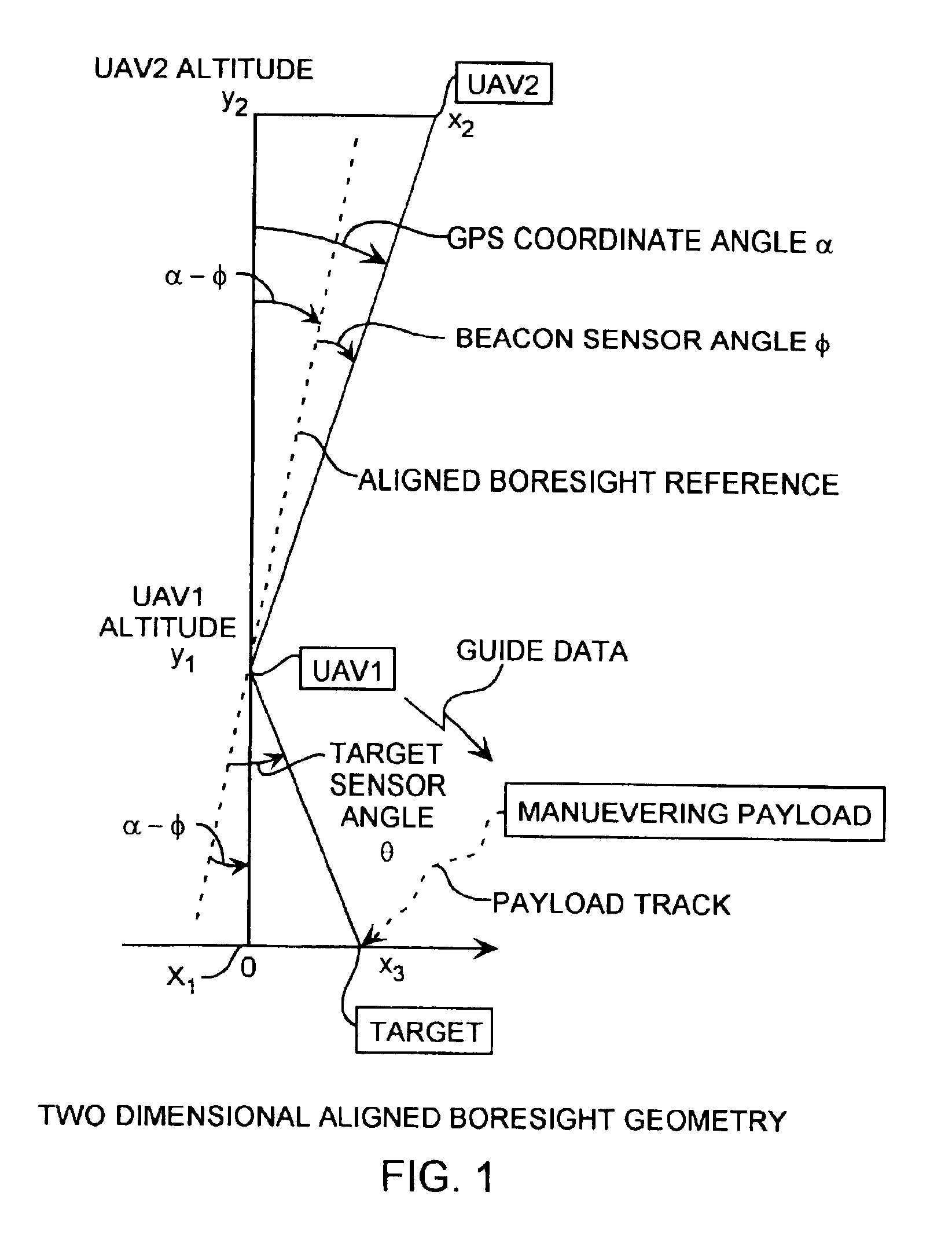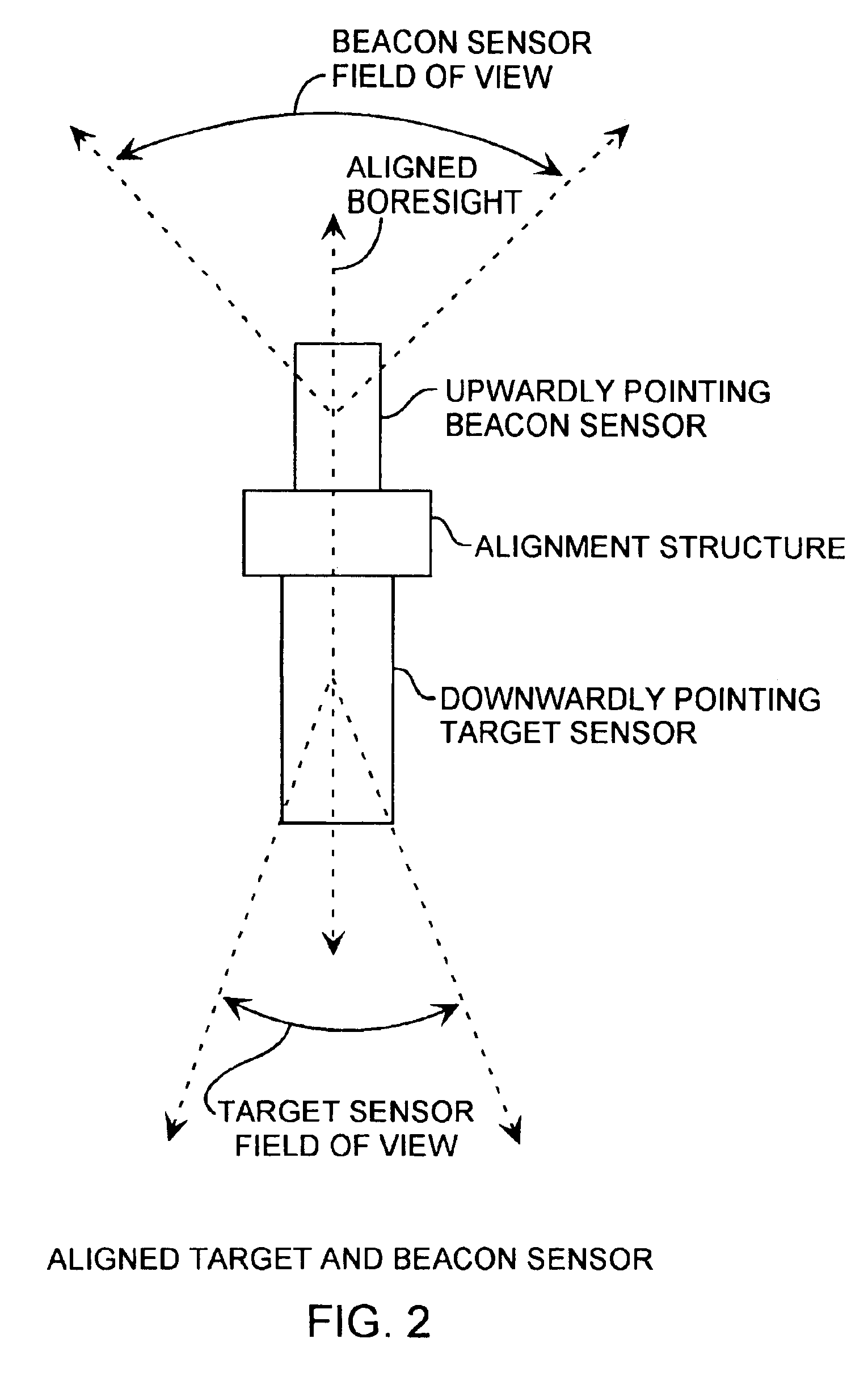GPS airborne target geolocating method
a geolocation method and target technology, applied in the direction of astronomical navigation, instruments, navigation by means of navigation, etc., can solve the problems of unsuitable cloudy environs, high cost of star trackers, and inaccurate geolocation, so as to improve the geolocation accuracy of targets and high accuracy of targeting
- Summary
- Abstract
- Description
- Claims
- Application Information
AI Technical Summary
Benefits of technology
Problems solved by technology
Method used
Image
Examples
Embodiment Construction
[0018]An embodiment of the invention is described with reference to the figures using reference designations as shown in the figures. Referring to FIGS. 1 and 2, many systems implementations can practice the method, including a GPS artificial star airborne boresighting system. The preferred system implementation includes an acquisition unmanned airborne vehicle UAV1 at a y1 low altitude relative to an x1=0 horizontal reference, and a beacon unmanned airborne vehicle UAV2 at a high altitude y2, at an x2 horizontal position. The UAV1 is a sensor platform and the UAV2 is a beacon platform. The UAV1 preferably includes a target and beacon sensor assembly as shown in FIG. 2, a GPS receiver, and two-way communication equipment, both not shown. The UAV2 preferably includes a steerable beacon generator, for providing a beacon, a GPS receiver, and two-way communication equipment, all not shown. GPS receivers and two-way communication equipment are well known.
[0019]The downwardly pointing tar...
PUM
 Login to View More
Login to View More Abstract
Description
Claims
Application Information
 Login to View More
Login to View More - R&D
- Intellectual Property
- Life Sciences
- Materials
- Tech Scout
- Unparalleled Data Quality
- Higher Quality Content
- 60% Fewer Hallucinations
Browse by: Latest US Patents, China's latest patents, Technical Efficacy Thesaurus, Application Domain, Technology Topic, Popular Technical Reports.
© 2025 PatSnap. All rights reserved.Legal|Privacy policy|Modern Slavery Act Transparency Statement|Sitemap|About US| Contact US: help@patsnap.com



